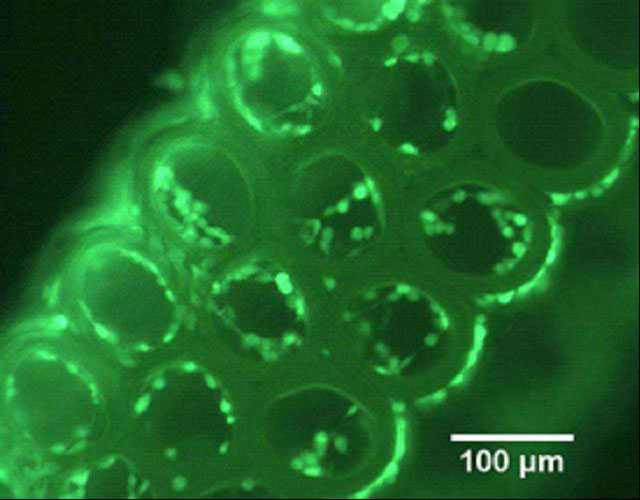Researchers from North Carolina State University, the University of North Carolina at Chapel Hill and Laser Zentrum Hannover have discovered that a naturally-occurring compound can be incorporated into 3D printing processes to create medical implants out of non-toxic polymers. The compound is riboflavin, better known as vitamin B2…
“This opens the door to a much wider range of bio-compatible implant materials, which can be used to develop customised implant designs using 3D printing technology,” said Dr. Roger Narayan, senior author of a paper describing the work and a professor in the joint biomedical engineering department at NC State and UNC-Chapel Hill.
The discovery enables researchers to create tiny, fine-detailed, bio-compatible structures, such as the scaffold for tissue engineering as shown in the image below.
The researchers in this study focused on two-photon polymerisation (2PP). Two-photon polymerisation is a 3D printing technique for making small-scale solid structures from many types of photo-reactive liquid precursors. The liquid precursors contain chemicals that react to light, turning the liquid into a solid polymer. By exposing the liquid precursor to targeted amounts of light, the technique allows users to “print” 3D objects.
This technique can be used to create small objects with remarkably detailed features, and in the bio-sector this includes scaffolds for tissue engineering, micro-needles or other implantable drug-delivery devices. Outside the bio-sector 2PP has created small-scale solid structures as exampled in the 3D printing of a remarkable 0.22 Millimetre high Empire State Building model here and even nano-scale electrodes as demonstrated here.
2PP has its drawbacks though because most chemicals mixed into the precursors to make them photo-reactive are also toxic, potentially problematic if the structures are used in a medical implant or are in direct contact with the body.

Lead author of the research paper is Alexander Nguyen, a Ph.D. student at NC State and UNC-Chapel Hill’s joint biomedical engineering program. The research was supported by National Science Foundation grant 0936110. The delicately entitled paper, “Two-photon polymerization of polyethylene glycol diacrylate scaffolds with riboflavin and triethanolamine used as a water-soluble photoiniator,” is published online in Regenerative Medicine and can be accessed here.


